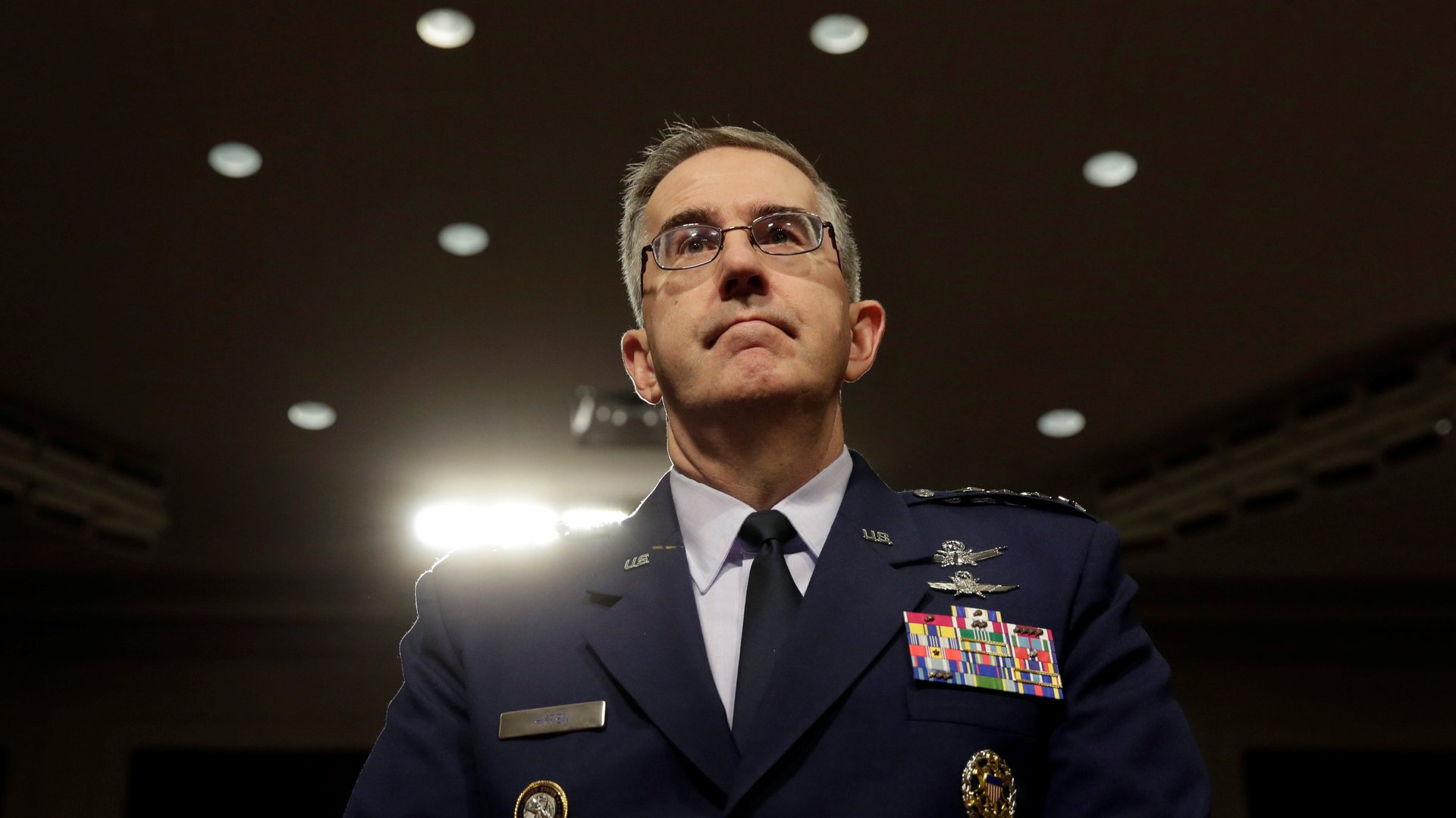The US may have a new top secret space weapon. What is it?
As Western military space honchos gathered in Colorado this week, a tantalizing report was published by journalist Theresa Hitchens: The Pentagon was debating whether or not to reveal a top secret space weapon, but the process was put on hold by the US withdrawal from Afghanistan.


As Western military space honchos gathered in Colorado this week, a tantalizing report was published by journalist Theresa Hitchens: The Pentagon was debating whether or not to reveal a top secret space weapon, but the process was put on hold by the US withdrawal from Afghanistan.
The leak and the weapon itself make for fascinating speculation. Brian Weeden, an expert at the Secure World Foundation, says perhaps a few dozen people would know the full picture of such a device, which Hitchens reports is considered a Special Access Program, the highest level of secrecy the US government uses.
Why is the US military talking about space weapons?
The debate within the government comes in response to big changes taking place in earth orbit. As space tech gets cheaper and more capable, the US faces more competition from rivals like Russia and China. In recent decades, multiple powers have demonstrated anti-satellite weapons. Russia has launched tracker satellites that shadow US government spacecraft and presumably surveil them.
One response to these trends was the creation of the US Space Force as an independent military service. But the US wants to do more to show that it shouldn’t be messed with in space. Right now, the US only acknowledges one space weapon—a ground-based communications jammer to interfere with signals sent from satellites.
(A brief note: Acknowledgment aside, the US also has missiles that could shoot down satellites—they demo’d this in 2008!—but maintains that these were modified weapons and not in regular service. I guess? Also, who knows how many top secret space weapons there are hiding behind the curtain?)
Faced with other countries blowing up and shadowing satellites, US military commanders want to give rivals a reason to think twice about taking offensive action. But deterring these rivals is tricky because they don’t rely as much on space surveillance, communications, and control as the US does. Even if the US could credibly threaten enemy satellites, rivals might still attack American spacecraft because that would hurt the US more. That’s a reason why the top general at US Space Command told reporters trying to tease out hints about the weapon that he believes in “integrated deterrence” across multiple domains. (For the real wonks, consider this your deterrence homework.)
There’s a historical precedent for this, Weeden says—in the late 1970s, the US debated whether it needed to develop anti-satellite weapons to deter the Soviet Union from attacking US satellites. Ultimately, they decided there wasn’t much deterrent value in space weapons, but did design a missile to be launched from an F-15 that would destroy a satellite for use during a potential conflict. (This is what happens in the 1986 Tom Clancy novel Red Storm Rising. “Clancy had great sources,” Weeden notes.)
What kind of space weapon could the Pentagon reveal?
Because of the emphasis on deterrence, and international condemnation of the debris created by anti-satellite weapons tests, Weeden suspects it won’t be a kinetic weapon. “My sense is this is something that could interfere with the targeting system of an attacking satellite or space weapon,” he says, perhaps by jamming its communications or using lasers to dazzle its radar and optical sensors.
More broadly, he thinks the US military will favor resilience over deterrence—rather than threatening rivals’ space systems, the idea would be making US systems far harder to destroy. In the 20th century, this meant going to super high orbits that are difficult to reach. Today, this might mean using constellations of thousands of replaceable, low-flying satellites.
Another issue: There won’t be secrets in space left for very long. Private companies are developing their own space radar and spinning around imaging satellites to take pictures of other spacecraft. “I’m sure there are things going on in space we’re not aware of, [but] it’s getting harder and harder to do that,” Weeden says.
And whether or not the US reveals this weapon, it’s going to become a geopolitical issue because everyone agrees new rules of behavior are necessary in orbit. The United Nations is in the middle of a process that aims to develop those norms. As that debate proceeds, Russia and China are likely to accuse the US of weaponizing space. That could make it more difficult to find a global consensus.
For Weeden, what’s minimally necessary is an agreement between the US and its rivals on how to handle incidents in space, akin to the Incidents at Sea Agreement negotiated by the US and the Soviet Union during the Cold War. “We’re going to be doing close approaches, they’re going to be doing close approaches, people may be doing, unfortunately, anti-satellite [weapons] testing,” Weeden says, stressing the need for countries to “distinguish between routine stuff and potential hostile threats.”
A version of this post was originally published in Quartz’s Space Business newsletter.